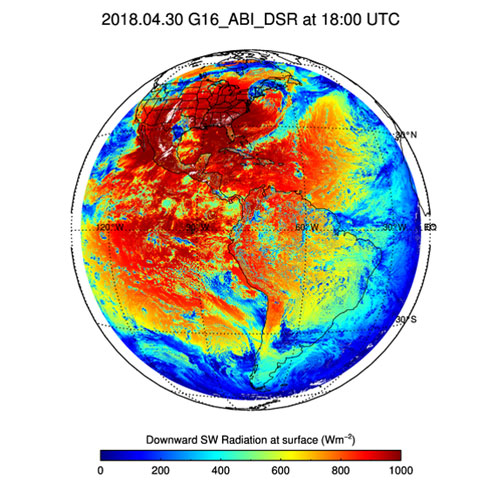Data Products: Downward Shortwave Radiation (Surface)

The downward shortwave radiation (DSR) product is an estimate of the total amount of shortwave radiation (both direct and diffuse) that reaches the Earth’s surface. The product algorithm uses spectral channels in both the visible and the infrared in addition to data regarding albedo and atmospheric composition to compute the downward shortwave radiation at the Earth’s surface. DSR has many applications both in the general and applied sciences. As one of the components of the surface energy budget, it is necessary for climate studies. Used together with cloud and aerosol properties it provides estimates of cloud and aerosol effects (forcing). It is also used in surface energy budget models, land surface assimilation models such as those used at NOAA NCEP, NASA LDAS, and ocean assimilation models either as an input (providing observationally-based forcing term), or as an independent data source to evaluate model performance. DSR data are also employed in estimating heat flux components over the coastal ocean to drive ocean circulation models. In agriculture, DSR is used as input in crop modeling. In hydrology, it is used in watershed and run-off analysis, which is important for determining flood risks and dam monitoring. The solar energy industry also needs estimates of DSR for both real-time and short-term forecasts for building energy usage modeling and optimization. Since high irradiance values result in surface drying, DSR is also used in monitoring fire risk.